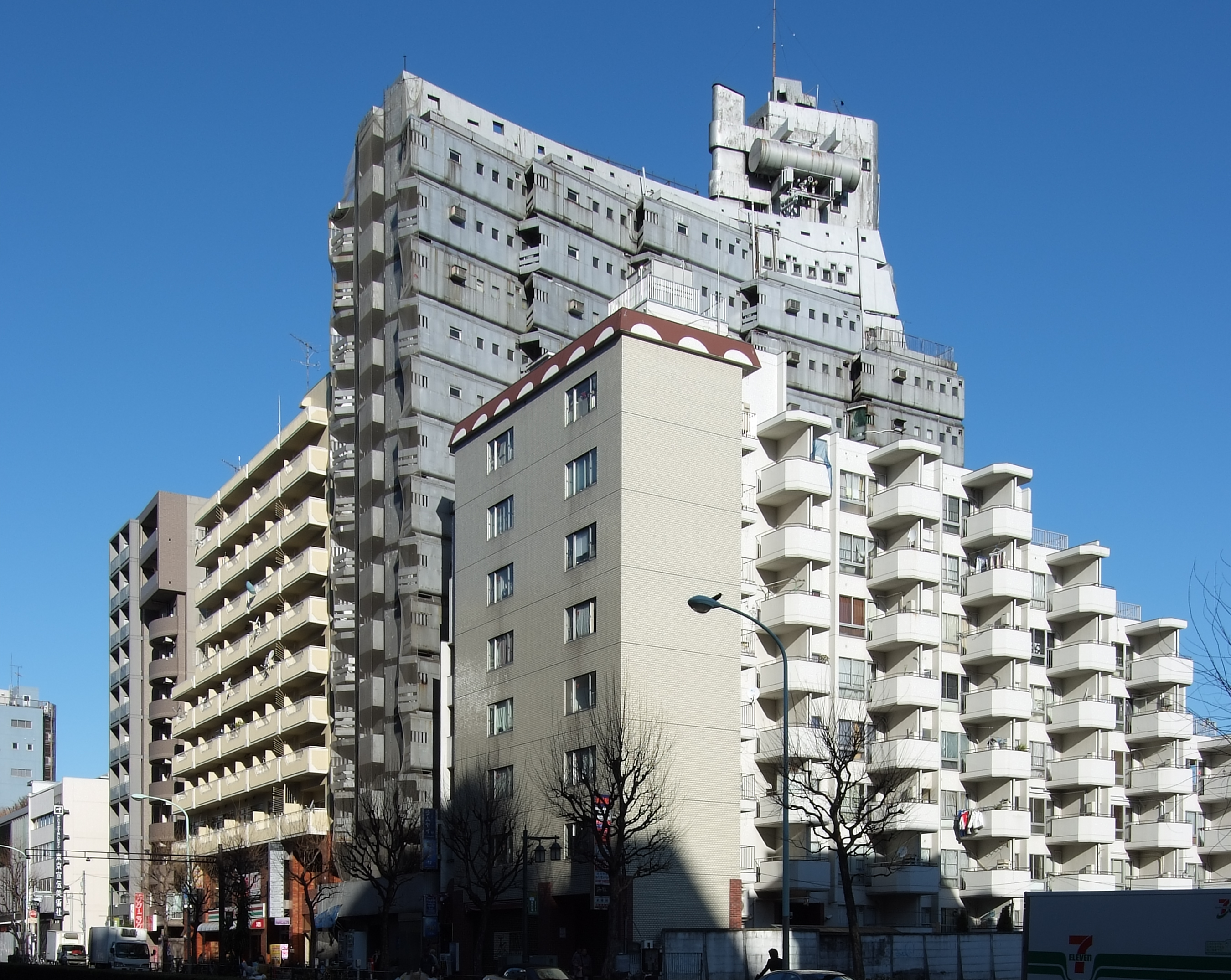Metabolism in architecture
Metabolism was a form of radical architecture that developed in Japan during the 1960s.
Presented with the opportunities of post-war rebuilding as a result of the devastation caused by the 1945 atomic bombs, designers and architects began to put into practice alternative theories and ideas for how cities should be designed.
Metabolism represented an urban environment that was responsive, replaceable and could grow in an organic way. It largely followed the ‘megastructure’ form that was gaining in popularity with architects and planners at the time, as a means of addressing the growing populations of urban areas and the rapidly-changing lifestyles of the post-war era. The principles of the megastructure were that it had to be modular, capable of extension and have a framework into which smaller elements could be ‘plugged’ or replaced.
The Japanese Metabolists were particularly inspired by University of East Anglia’s ‘Ziggurats’, as well as by Moshe Safdie’s Habitat 67 in Montreal. Although many projects failed to get off the ground, texamples of the Metabolist form include the battleship-esque New Sky Building in Shinjuku (see image above) and the Nakagin Capsule Tower, Tokyo by Kisho Kurokawa.
[edit] Related articles on Designing Buildings Wiki
- Architectural styles.
- Art Moderne.
- Blobitecture.
- Brutalism.
- Buckminster Fuller.
- Constructivist architecture.
- Deconstructivism.
- Frei Otto.
- Fuji TV Building, Tokyo.
- Geodesic dome.
- Habitat 67.
- High-tech architecture.
- Last Futures: Nature, Technology and the End of Architecture.
- Lloyds of London.
- Megastructure.
- Nakagin Capsule Tower.
- Neo-futurism.
- Norfolk Terrace and Suffolk Terrace - ‘the Ziggurats’.
- Robot Building, Bangkok.
- The Japanese House: Architecture and Life after 1945.
- Unusual building design of the week.
- Urban design.
[edit] External references
- ‘Last Futures: Nature, Technology and the End of Architecture’, MURPHY D., Verso Books (2015).
Featured articles and news
The history of building regulations
A story of belated action in response to crisis.
Moisture, fire safety and emerging trends in living walls
How wet is your wall?
Current policy explained and newly published consultation by the UK and Welsh Governments.
British architecture 1919–39. Book review.
Conservation of listed prefabs in Moseley.
Energy industry calls for urgent reform.
Heritage staff wellbeing at work survey.
A five minute introduction.
50th Golden anniversary ECA Edmundson apprentice award
Showcasing the very best electrotechnical and engineering services for half a century.
Welsh government consults on HRBs and reg changes
Seeking feedback on a new regulatory regime and a broad range of issues.
CIOB Client Guide (2nd edition) March 2025
Free download covering statutory dutyholder roles under the Building Safety Act and much more.
AI and automation in 3D modelling and spatial design
Can almost half of design development tasks be automated?
Minister quizzed, as responsibility transfers to MHCLG and BSR publishes new building control guidance.
UK environmental regulations reform 2025
Amid wider new approaches to ensure regulators and regulation support growth.
The maintenance challenge of tenements.
BSRIA Statutory Compliance Inspection Checklist
BG80/2025 now significantly updated to include requirements related to important changes in legislation.























